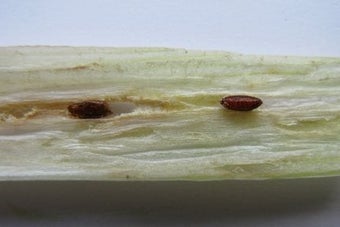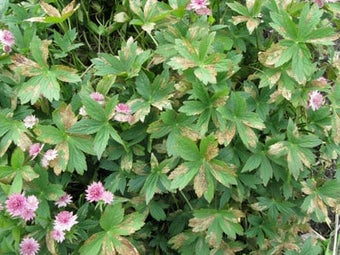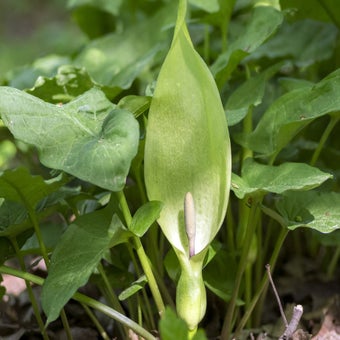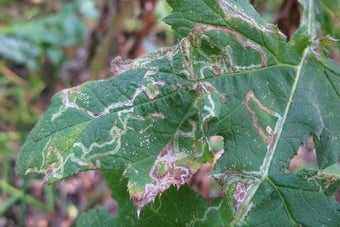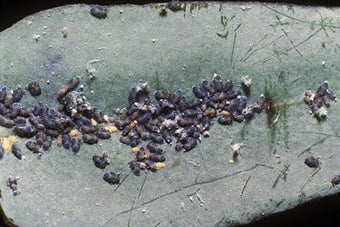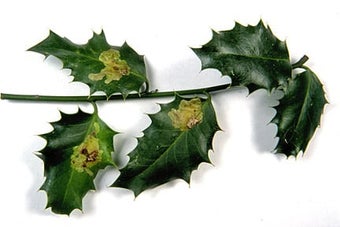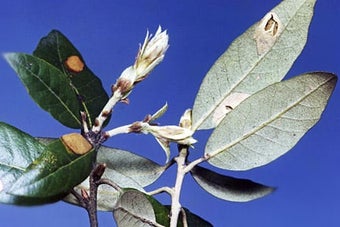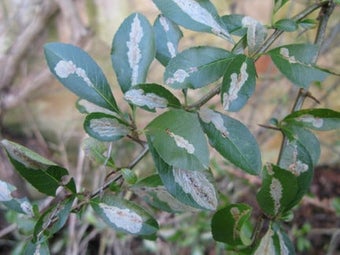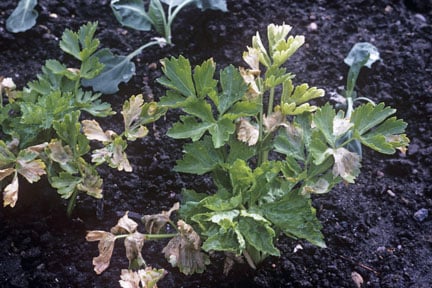
Quick facts
Common name - Celery leaf mining fly
Scientific name - Euleia heraclei
Plants affected - Celery, parsnips, celeriac, parsley, lovage and related wild flowers
Main symptoms - Blotchy mined leaves that become brown and papery
Caused by - Larvae of a fly
Timing - May to October
What is celery leaf mining fly?
Adult celery leaf mining flies are light brown to black flies, with a yellow thorax, they are approximately 5 mm long. The larvae are white, legless and headless maggots that feed in groups within the leaves of celery and related plants. The larvae reach 7 mm in length.
The fly belongs to the family Tephritidae, also known as picture winged flies or fruit flies. A diverse group of flies with more than 70 species Britain. Many form galls on plants in the Asteraceae (daisy family) others feed on fruits or as leaf miners.
Nearly 900 insects, including some beetles, sawflies and moths create leaf mines as larvae in Britain. More information about some of these insects can be found at The leaf and stem mines of British flies and other insects.
Symptoms
The maggots of this fly form communal mines in the leaves. Affected areas at first appear as large, pale green blotches which soon dry up and become brown and papery. This gives the foliage the appearance of having been scorched. Parsnips, celeriac, parsley, lovage and related wild flowers are similarly damaged by this insect.
There are at least two generations during the year and mining occurs between early May and the autumn. The first generation is generally less numerous than the second, but it can cause a serious check to growth. This may result in small celery plants with a bitter taste. When the grubs have finished feeding, some pupate in the mines while others pupate in the soil.

Management
Leaf miners are a part of a healthy balanced garden ecosystem.
- Some damage can be tolerated
- Growing the plants under insect proof mesh will prevent female flies laying eggs on the foliage. Crop rotation must be practised in conjunction with this method, otherwise adult flies may emerge from overwintered pupae in the soil and be trapped under the netting
- Most leaf miner species will have natural enemies including parasitoid wasps. Birds such as blue tits can sometimes open mines to consume the larvae within
- Susceptible plants can be checked regularly during the summer for early signs of damage
- Populations that start late in the are unlikely to cause serious harm and control measures may not be necessary at that time
- On uncovered plants control is limited to pinching out affected parts of the leaves
- Bury deeply affected leaves at the end of the growing season to destroy some of the overwintering pupae


